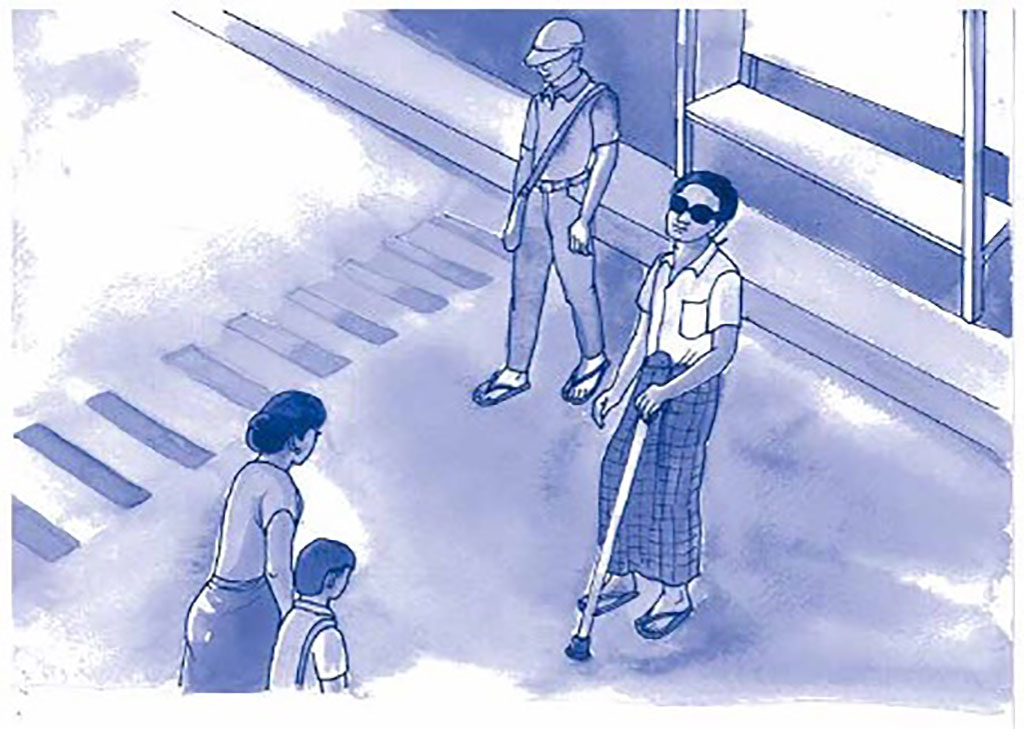PREVIEW
What special rights might persons with disabilities need?
There is a treaty that relates to the rights of persons with disabilities. This treaty and some important articles are listed below.
Convention on the Rights of Persons with Disabilities (CRPD, 2006)
The CRPD was adopted by the UNGA in 2006 and it came into force in 2008. Myanmar acceded to it in 2011. Therefore, this treaty is legally binding in Myanmar. Some of the human rights relevant for persons with disabilities in this treaty include:
Article 9: Right to access information, communication and public spaces
Article 11: Right to protection and safety during armed conflict, humanitarian emergencies and natural disasters
Article 12: Equal recognition before the law, including owning property and accessing financial services
Article 13: Access to justice
Articles 15 and 16: Freedoms from torture, cruel, inhuman and degrading treatment or punishment, and from exploitation, violence and abuse
Article 17: Right to respect for physical and mental integrity
Article 18: Right to residence, to freedom of movement and to a nationality and a birth certificate for children
Article 19: Right to choose where and how to live
Article 20: Right to personal mobility
Article 21: Right to have information presented in accessible ways, including Braille and sign language
Article 22: Right to privacy
Article 23: Right to freely enter into marriage and have children
Article 24: Right to access to inclusive education
Articles 25 and 26: Rights to access appropriate healthcare, habilitation and rehabilitation
Article 27: Right to employment and fair pay
REFLECTION/ DISCUSSION
If you were a government official in charge of meeting Myanmar's obligations under the CRPD, what actions might you take to fulfil these obligations?
FOCUS ON MYANMAR:
Disability Does Not Mean Inability
In 2018, the Yangon-based Myanmar Centre for Responsible Business (MCRB) and the Association for Aid and Relief Japan (AARJ) released a resource for employers in Myanmar, named Employing Persons with Disabilities – A Handbook for Employers in Myanmar. This resource offered practical advice to employers in the country about how to create accessible employment opportunities and increase recruitment and job retention for persons with disabilities.
“When companies and other organisations create a culture of inclusion, and champion equal access, this is of mutual benefit. We would like to encourage all employers to embrace diversity and the different types of talent pool,” Yoshio Nakagawa, AARJ’s Yangon representative, said.
The resource covered information about the demographics of persons with disabilities in Myanmar, examples of discrimination in the workplace, Myanmar’s legal framework for protecting persons with disabilities and promoting their participation in society, and advice for employers. The guidebook identified four steps towards successful employment of persons with disabilities: plan, prepare, recruit and retain (MRCB & AARJ 2018:35-37).
In Yangon, there are some employers who have exclusively targeted persons with disabilities as their employees. The New Style hair salon has been hiring persons with disabilities for the past decade under their motto “disability does not mean inability.” The Able was the first sign language book café in Myanmar and it was run by persons with sensory impairments. Their objective was to “embrace differences and empower inclusivity.”
REFLECTION/DISCUSSION
What are some advantages for society if the economic, social and political participation of persons with disabilities is increased?
အမျိုးသားရေးဝါဒီ
လှုပ်ရှားသွားလာနိုင်မှု
အမွေအနှစ်
ကိုလိုနီဝါဒ
